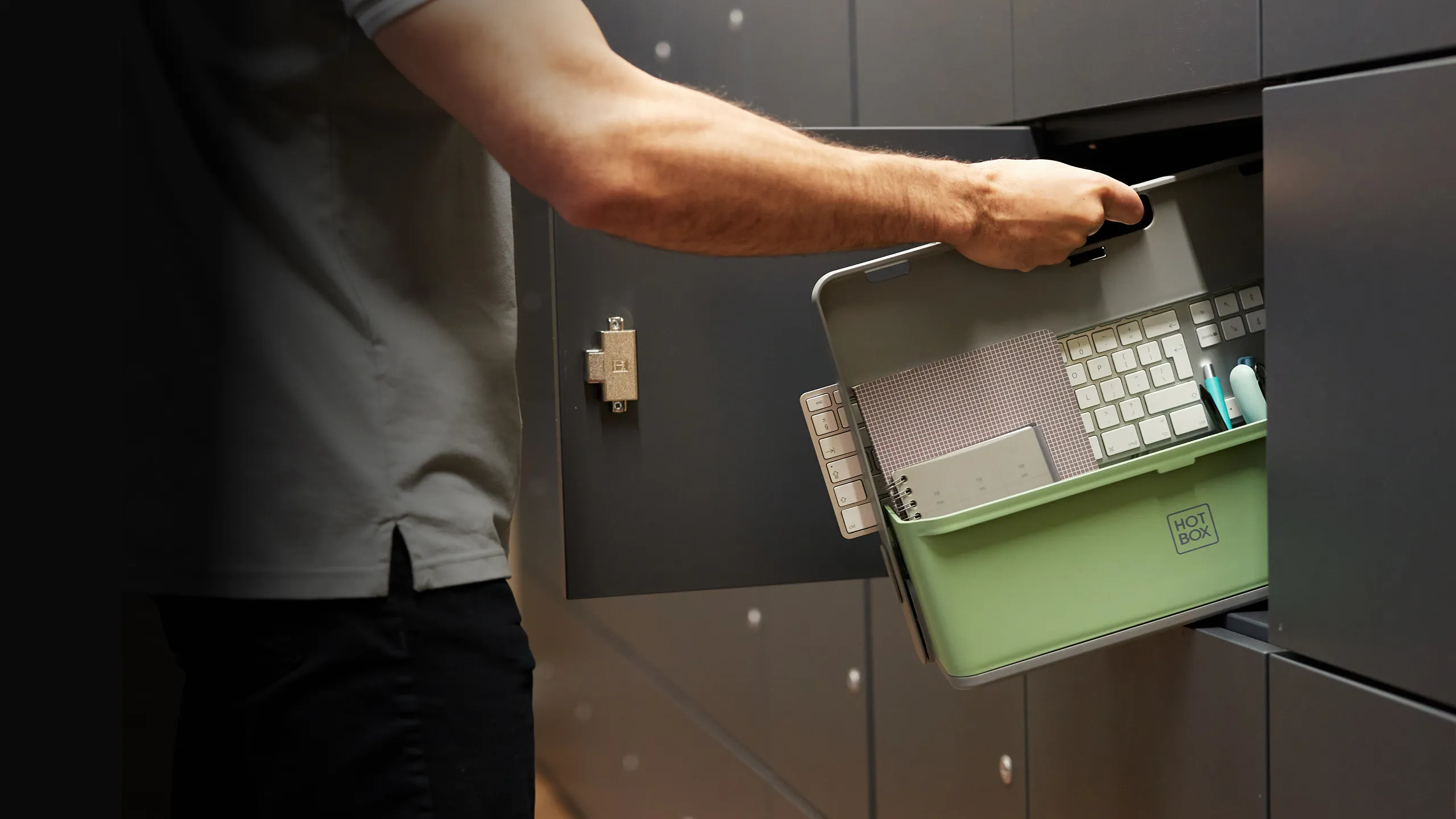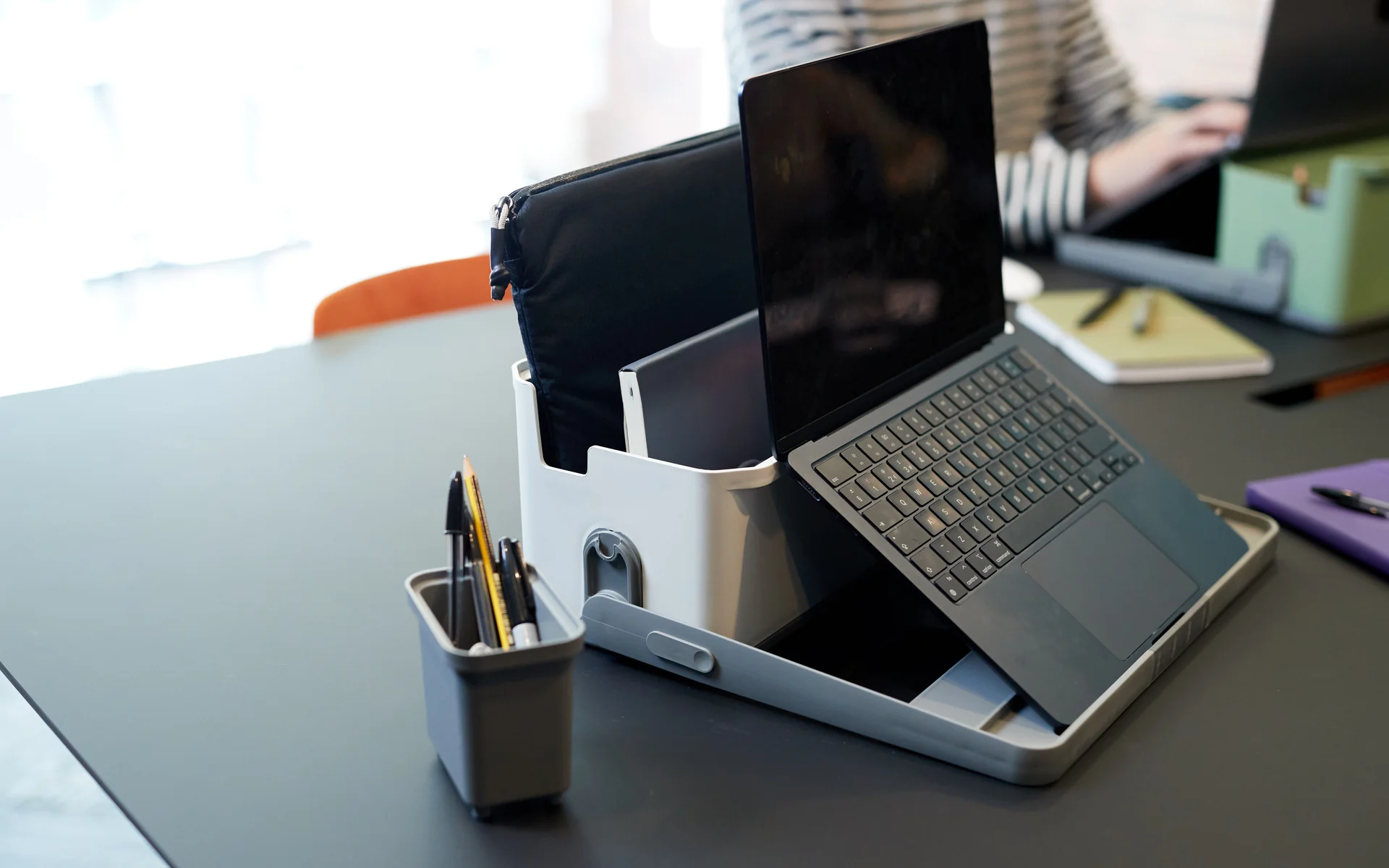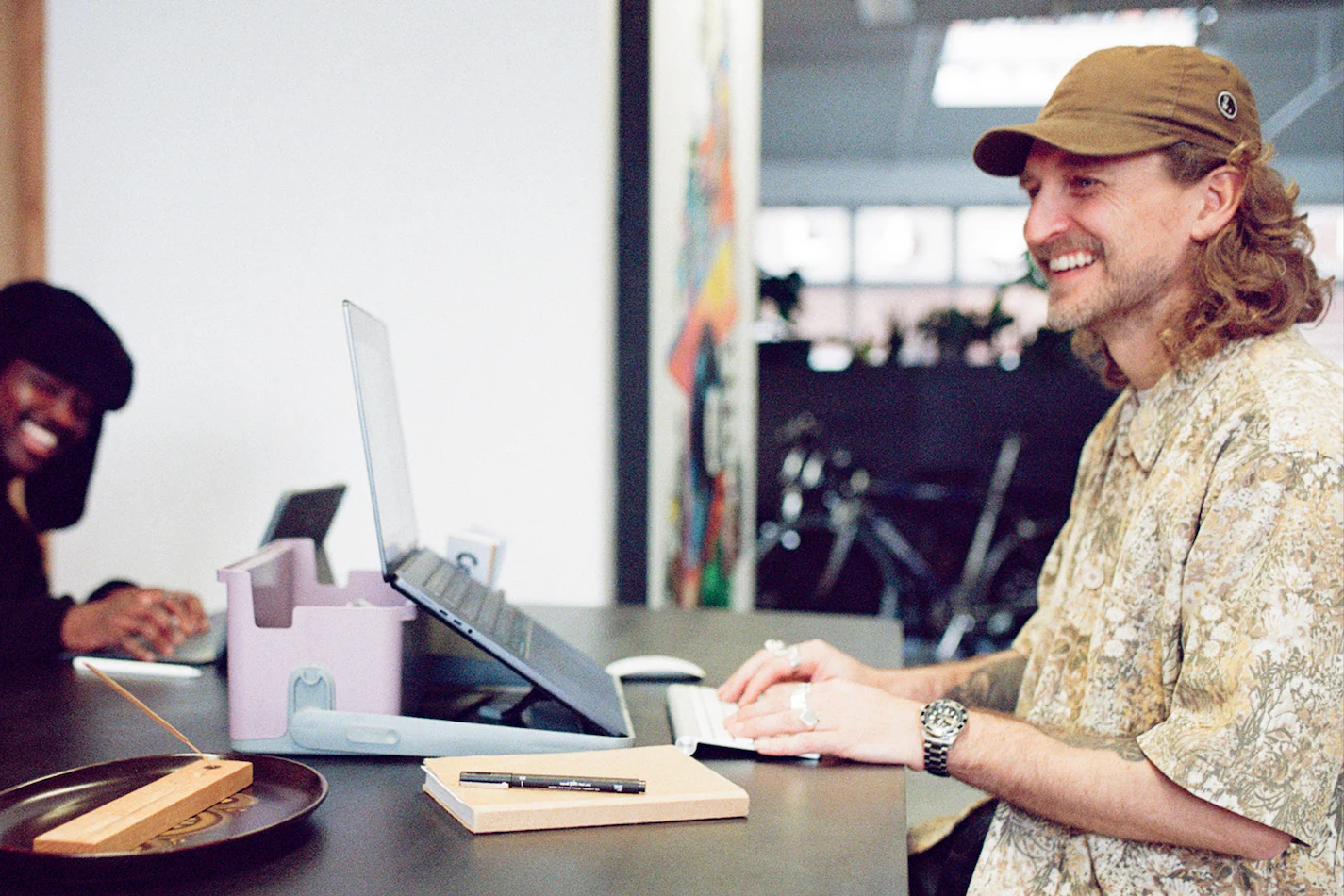– Hotbox
Insights
Trends and thinking in the modern workplace.
– Order a sample & get free advice
Find the right products for your business.
We’re the best friend of facilities managers, change managers and IT planner who want to make their workspace work - effortlessly.
Let’s have a chat - we don’t bite.
















